

| Circe
| Tuesday, August 25, 2009 I washed and sanded (by machine and hand) the fill material on the toerails and hull deck joint, and then, after cleaning up, applied a second coat of filler. This filler was intended to only fill the existing external seam and old fastener holes, and I made no attempt to "fair" the toerails/seam into the hull. The transition would eventually be once again covered with an external rubrail. Therefore, I used a small knife to apply the filler, leaving the little ridges between passes as these were easy to knock down with sandpaper later. My goal was a completely filled and smooth joint (and, of course, to till and fair any ground-out areas that would be visible), but not necessarily creating a perfect fairness between the uneven hull and deck moldings, which would have been fruitless and unnecessary here. |
|
Next, I turned to the chainplate knees. I cut out the old knees and ground down the remaining tabbing to provide a smooth and clear bearing surface for the new work. The old plywood knees were well-adhered with thick tabbing, and despite the water leakage I'd noticed earlier, the plywood inside was generally sound, if damp. However, the old knees had been overly narrow, and barely provided a proper bearing and bolting surface for the chainplates. |
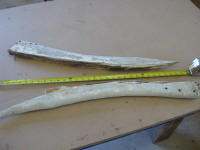 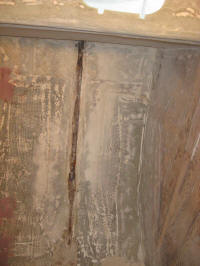
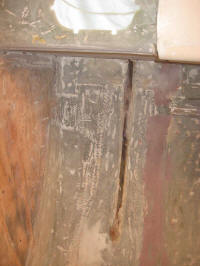 
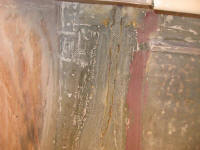 |
|
After cleaning up the area, I filled the small void between the old tabbing (where the plywood had been) with thickened epoxy to bring it up even with the surrounding area and provide a smooth area for the new chainplate knees. |
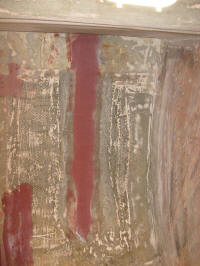
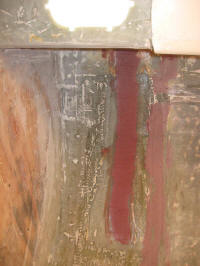 |
|
To ensure that the new knees were wide enough and in the proper location, I inserted the chainplates through their deck slots, using Vice-Grips to hold them in the proper position and orientation. Then, I made a cardboard template of the new knees, allowing several inches of width beyond the chainplates. One template worked for both sides of the boat. I also used a level to transfer a plumb line down to the hull off the chainplates, and made reference marks for the new knees so that they'd be plumb (I'd leveled the boat last week); the old knees had not been plumb. To allow for the thickness of the tabbing that would secure the knees, I drew a second mark roughly 1/4" aft of the first; I'd install the knees to this new mark, and the tabbing would make up the difference. |

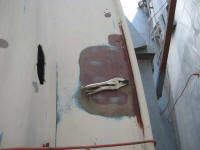 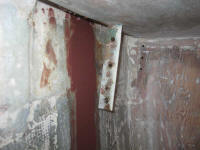
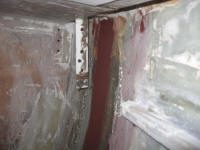 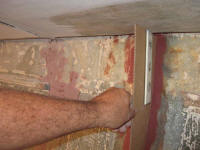
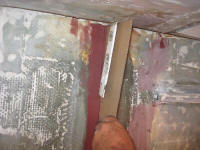 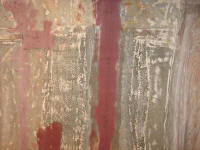
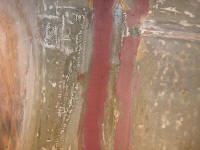 |
|
For the new knees, I selected 3/4" G-10 prefab epoxy laminate. I transferred the cardboard pattern to a sheet of the material, cut out the knees, sanded the surfaces, and rounded over the outside edge to allow for tabbing. Afterwards, I used the cut knees to create a template for cutting fiberglass to fit over and encapsulate the knees in a single piece, and cut three layers of material for each knee. |

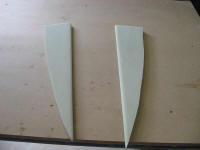 |
|
I installed the knees in a bed of epoxy, with two dabs of hot-melt glue to hold them in place. Then, I installed epoxy fillets at the transition between the knees and hull to increase the bonding area and provide a curved transition for the fiberglass tabbing. Finally, I wet out and installed three layers of 1708 biax over the knees, extending well onto the hull on each side of the knee. Later, in a separate operation, I'd tie the knees into the deck. |
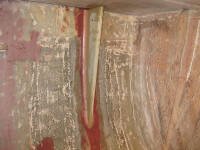
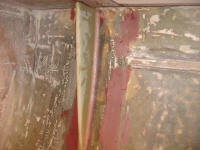 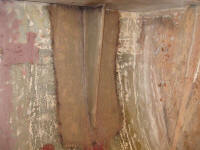
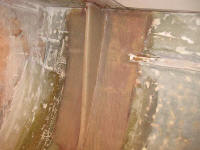 
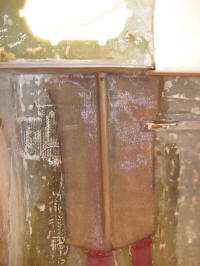 |
|